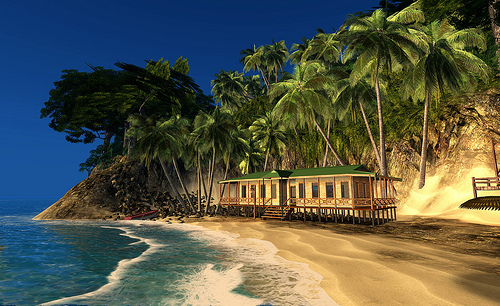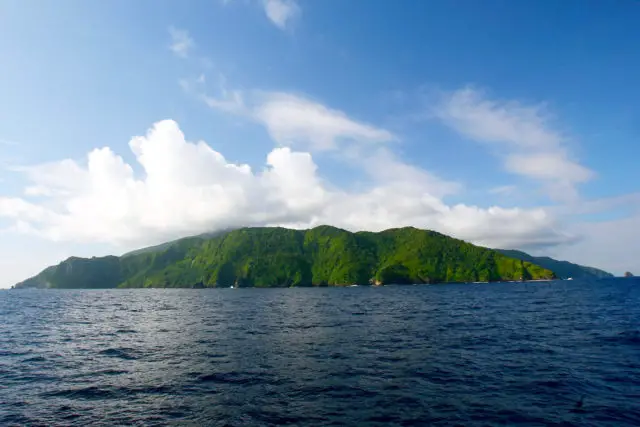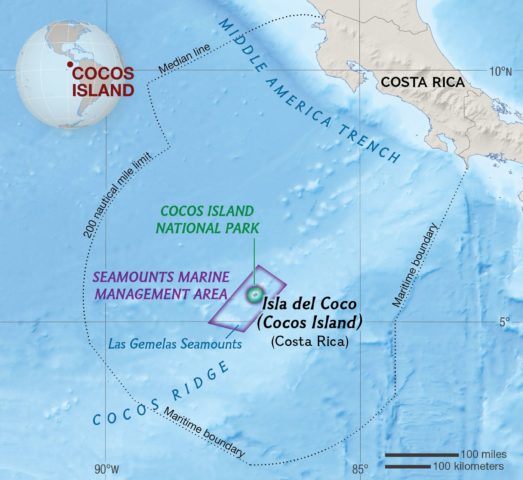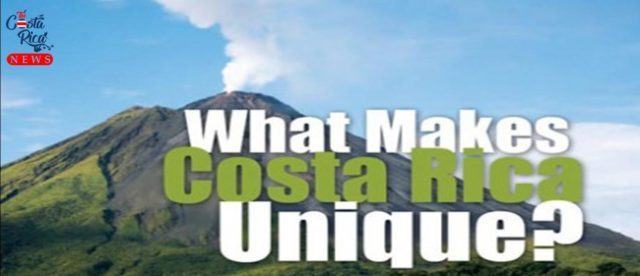Costa Rica is characterized by being one of the main countries in the world that have endeavored in preserving and maintaining a large proportion of its territory destined for national parks. Thanks to its laws, Costa Rica has 10.27% of its land as protected areas such as national parks and an additional 17% as forest reserves and wildlife refuges.

For the sustainability of its national parks and biodiversity, the state created in 1998 the National System of Conservation Areas (Sinac), that is responsible for protecting almost two hundred areas, which include more than 50 wildlife refuges, 32 large national parks, more than a dozen forest reserves and a handful of biological reserves.
For the tourist who is interested in direct contact with nature, this beautiful country has 75% of the biodiversity of Central America; It is wonderful and incredible to enjoy such beauty concentrated in one place, characterized by the presence of the largest rainforests in Latin America, wildlife reserves and wetlands.
The National System of Conservation Areas of Costa Rica includes nine management categories: National Park, Biological Reserve, Absolute Nature Reserve, National Monument, Protective Zone, Forest Reserve, Wildlife Refuge, Wetland and Indigenous Territories; These represent approximately 26% of the national territory, with a total of 169 protected areas that have been declared so by their ecosystems, the existence of endangered species and their historical and cultural significance.
Cocos Island: “A National Treasure”.
For all those travelers who love biodiversity and want to know one of the natural landscape wonders of Costa Rica, we invite you to visit the “Isla del Coco National Park”, which is one of those that has the greatest tourist attraction and extension. It is located 535 kilometers off the Pacific coast of Costa Rica and was declared a National Park in 1978.
Cocos Island is one of the 32 national parks of the country and in December 1967 it was declared a UNESCO World Heritage Site due to its unique natural beauty and biological richness; In May 1998 it was given the “Wetland Category of International Importance” and on December 2002 it was designated a Historic-Cultural Site by the Ministry of Culture, Youth and Sports.
On Cocos Island visitors can enjoy about 235 species of plants, 400 of insects (65 of them endemic), 100 species of birds of which 13 residents, 3 endemic and 9 endangered. Visitors can also live the experience of admiring the turquoise blue sea that characterizes the island, added to a large number of coral rock formations, constitutes a wonderful and ideal habitat for abundant marine fauna, such as sharks (hammerhead and white fin), dolphins, manta rays, mollusks and many marine species that are what make this Island one of the most extraordinary places in the world for scuba diving.
This is the only oceanic island of a rainy nature in the eastern Pacific, with an annual average rainfall of 7,000 mm, so it has an evergreen vegetation with a combination of forests with endemic trees 25 meters high, cliffs of up to 183 meters and a varied underwater landscape; there is also the lowest altitude cloud forest in the world, between 400 and 600 meters above sea level.
This paradisiacal island also has numerous impressive waterfalls, as well as legendary stories of pirates and treasure hunters who, they say, hid here; all this makes this island a place of incalculable ecological and historical value.
Eco-touristic activities on the Island.

For visitors who are interested in diving, Isla del Coco National Park (PNIC abbreviation in Spanish) is recognized as one of the best recreational diving destinations in the world, thanks to the biodiversity and beauty of its marine resource that is according to National Geographic host to 3.5% of the world’s marine species. It is characterized by the clarity of its waters that remain so throughout the year, which facilitates the observation of that incredible marine universe. The island is surrounded by islets that house important hammerhead shark colonies, being its observation one of the main tourist attractions.
For those who want to practice scuba diving, this park has 19 authorized sites, of which the most famous and used are: Roca Sucia, Alcyone, Manuelita, Punta María, Dos Amigos, Pájara, Vikinga, Roca Sumergida, Aleta de Tiburón, Bahía Chatham Bay and Barco Hundido, among others. The traveler should not miss 3 ideal sites for lung diving or snorkeling in Manuelita Somero, Bahía Chatham, and Roca Gissler.
According to the surveys carried out by the Sustainable Tourism Program, 78% of visitors state that the reason for their visit to the PNIC is due to admiring the marine resources; while 12% claim to visit the place due to all the attractions in general, including both the marine resources but also the historical aspects, landscapes, flora, and fauna.
“The most beautiful island in the world”.
The famous marine biologist and French documentary filmmaker Jacques Cousteau called this island “the most beautiful in the world.” The important water resources with its rivers, ravines, and abundant cliffs give way to a large number of waterfalls that can be seen all around and deep inside the island.
Also, its scenic beauty is enriched by the contrasts in the tones of the sea around the numerous islets, its particular vegetation, amazing sunrises, and sunsets; all this allows the visitors to enjoy a unique experience.
On the island you can enjoy two swimmable beaches at the bays of Wafer and Chatham; tourists can travel two paths that end at high elevation observation points, intended for bird watching and scenery viewing; additionally, the park has the majestic Rio Genio Waterfall.
Historical and cultural attractions
Cocos Island is a place of historical episodes that begin with its first visitors in 1526; It is characterized by tales of pirates who roamed the Pacific coast on the prowl of Spanish possessions and took refuge here; but the most striking are the legends of hidden treasures, mainly that of the “Treasury of Lima”. It is an incredible fact that numerous expeditions for the search for these hidden pirate treasures went on for more than 150 years until in 1994 the government of Costa Rica banned this kind of activity in that national park.
Part of the historical-cultural legacy is located at Chatham Bay, where rocks with engravings dating from 1839 to 1992 are found. It is claimed that in 1874 General Tomas Guardia ordered the construction of prison there, with two buildings in the upper part of Bahia Chatham that served as command post and jail, at the same time.
Another momentous event was the activities carried out by August Gissler, an explorer who got from the government of Costa Rica and authorization for establishing an agricultural colony; ut it is known that Gissler was there from 1894 to 1905 with the real hidden aim of finding the “Treasure of Lima”.
How to get to Cocos Island.

Departing the capital of Costa Rica, San José, take the route that goes from Caldera to the port of Puntarenas; from there you can reach the Isla del Coco National Park by boat; the trip takes approximately 36 hours, and you can plan your trip at whatever time of year you want, since the park is open all year, every day of the week; There you will find two main arrival areas: Wafer Bay and Chatham Bay.
The park has trained personnel to provide information and tourist guides; radio communication systems, as well as wireless internet; and facilities for scientific research. It is important to remember that camping is not allowed on this site, but the permanence of boats and overnight stays in them, such as tourism cruise ships, are accepted; the accommodations on the island are exclusive for officials and park rangers. The services that are offered to the visitors are Park guardhouse, trails signage, toilets, showers, and drinking water deposits.
Information Contacts for Visitors:
Regional Headquarters Conservation Area Isla del Coco (San José):
Telf.: (506) 2291-1215 and (506) 2291-1216.
Cocos Island National Park (Wafer Base):
(506) 2206-5700 / 2206-5701 / 2206-5702 / 2206-5703.
Cocos Island National Park (Chatham Base):
(506) 2206-5601 and 2206-5602. (Office hours: 8 am to 5 pm)

